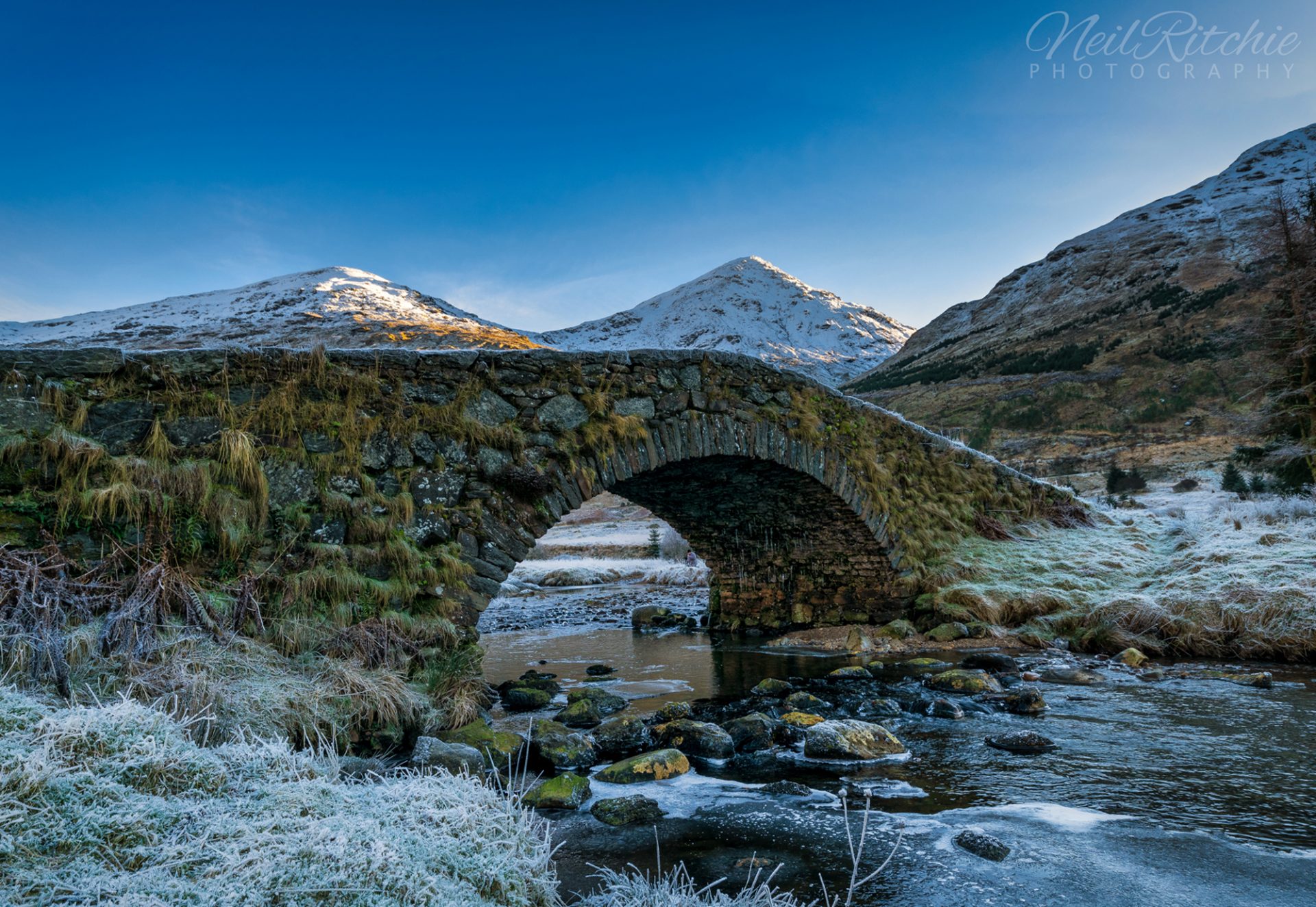Butter Bridge stands in the shadow of Beinn Ime and crosses the gently flowing Kinglas Water in Glen Kinglas, Argyll. The bridge was built in 1749 as part of Major William Caulfeild’s military road that ran from Dumbarton to Inveraray.
Dumbarton to Inveraray military road
A military road from Dumbarton to Inveraray was first proposed by General George Wade in a military survey shortly after he became commander-in-chief in Scotland in 1725. In the spring of 1744 Major William Caulfeild, who directed the road-building programme after Wade’s departure from Scotland in 1740, carried out a detailed survey of the proposed route.
Construction of the road began in the summer of 1744 and by May 1745 had got as far as Luss, on the west bank of Loch Lomond, with work on this stretch of the road carried out by men from Lascelles’ Regiment. A stone with the inscription ‘Colonel Lascelles Regiment, May 1745’ was placed three miles from Luss.
Road building in the highlands was interrupted in August 1745 when Charles Edward Stuart landed in the highlands, beginning the 1745 Jacobite Rising. At the onset of the ’45, a party from Campbell’s 21st Regiment (Royal Scots Fusiliers) was attacked by the Macgregors of Glengyle while they were working on the stretch of road between Luss and Tarbet.
Work was halted until after the Jacobite defeat at the Battle of Culloden in April 1746 and resumed in September 1746 with The Scots Magazine for that month reporting that ‘a small detachment of soldiers under Major Caulfeild are begun to work on the roads of
The road as far as the Rest and be Thankful was completed in 1748 by parties from Ancrum’s Regiment (later the South Wales Borderers) and the remaining twelve miles of road to Inveraray was completed in 1749.
The Dumbarton to Inveraray road was not without its detractors and there were those who claimed that its construction was more for the benefit of the Duke of Argyll as it would ease his journey by carriage to and from his castle at Inveraray. While the road certainly did benefit the Duke of Argyll, it was not without military significance.
During the Jacobite Rising of 1715, the Jacobites marched into Argyllshire intending to capture Inveraray and the movement of government troops into Argyllshire during the 1715 and 1745 Jacobite Risings would certainly have been hindered by the lack of good roads.
Butter Bridge in Glen Kinglas
Situated a short distance from the Rest and
While the roads were constructed by parties of soldiers, the bridges were built by civilian masons with the stone being sourced locally. Work on a bridge could still be continuing long after a stretch of road was already completed.
To build the military bridges, first, the river banks would be cleared to make way for a solid foundation. Then a wooden frame would be erected which would support an arch barrel. Once the keystones were in place the arch barrel and frame would be removed. A lime harling was then applied over the stonework as a protective coating.
Bridge-building was time-consuming and expensive and a number of the bridges on the network had to be rebuilt after being washed away by fast-flowing torrents, likely due to poor foundation work.
The name Butter Bridge comes from the tradition of bringing cattle high up into the glen in the summer months for pasture. Here in the Àirigh (Sheiling), the cattle would be milked and butter and cheese produced in temporary dwellings.
Article first published on 18 January 2019

